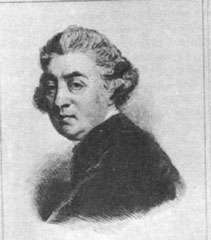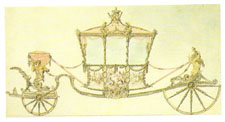Sir William Chambers
A prodigy for Genius, for Sense & good taste
1723 - 1796

Designs the Chinese Pagoda at Kew and the State Coach
A prodigy for Genius, for Sense & good taste - thus was his reputation in Paris while studying there, as reported by Robert Adam.
William Chambers approached Twickenham via Kew where he designed a number of pavilions of which the most famous is the Chinese Pagoda. These were for the dowager Princess of Wales, Frederick's widow. Frederick, Alexander Pope's patron, had died in 1751 and Chambers prepared a design for a mausoleum.
A happier commission was for the design for the state coach which is still in use today. Rather larger was his commission for Somerset House in London. His appointment as architectural tutor to the young Prince of Wales, later George III, gave him a useful entrée to the Court and Royal favour. He was later created a Knight of the Polar Star by the King of Sweden and King George permitted him to use this title.

A local resident
In about 1761 he is said to have designed a house for Moses Franks in Teddington - Teddington Grove, adjacent to the southern boundary of Horace Walpole's Strawberry Hill estate. The house was demolished in 1923, but Chambers' part may have been confined to the original layout of the gardens.
Chambers became a local resident when he was granted an official residence on Hampton Court Green (later granted to Michael Faraday). However, he lost the use of this when he acquired the lease of Whitton Place in about 1781. He carried out alterations to the house, which had been designed by Roger Morris in 1732-9 for the Duke of Argyll. He also adorned the garden indulgently with statues and copies of ancient temples described by a contemporary writer as "gee-gaws and absurdities."
Towards the end of his life he moved away to a small house in Norton (now Bolsover) Street in London, where he died, and was buried in Westminster Abbey.
Further reading:
Howard Colvin, A Biographical Dictionary of British Architects 1600-1840, Yale, 1995
P Foster and D H Simpson (rev Vic Rosewarne), Whitton Park and Whitton Place, Borough of Twickenham Local History Paper no41, 1979




